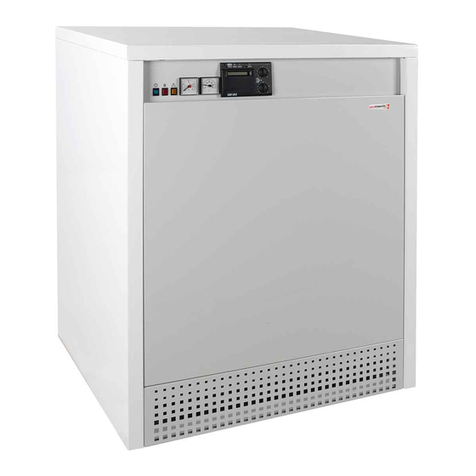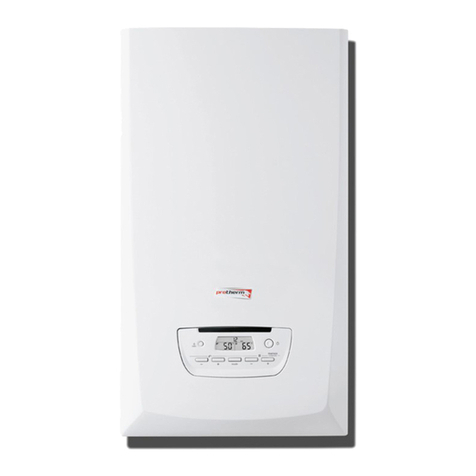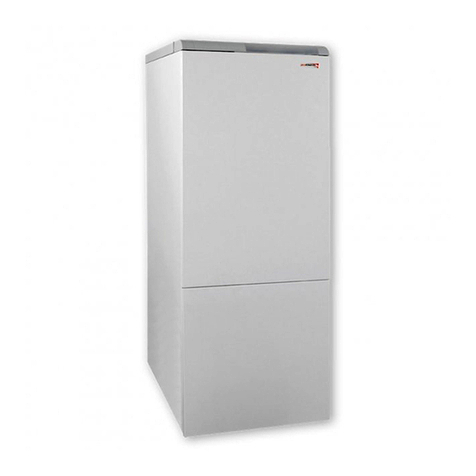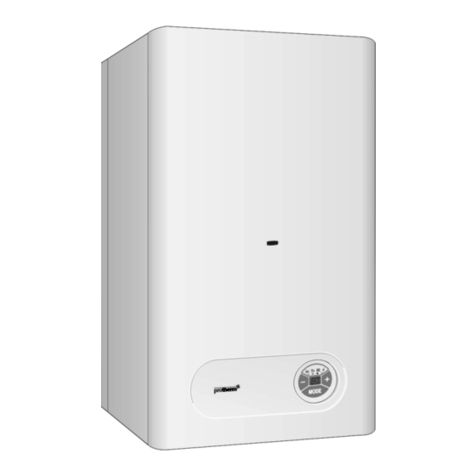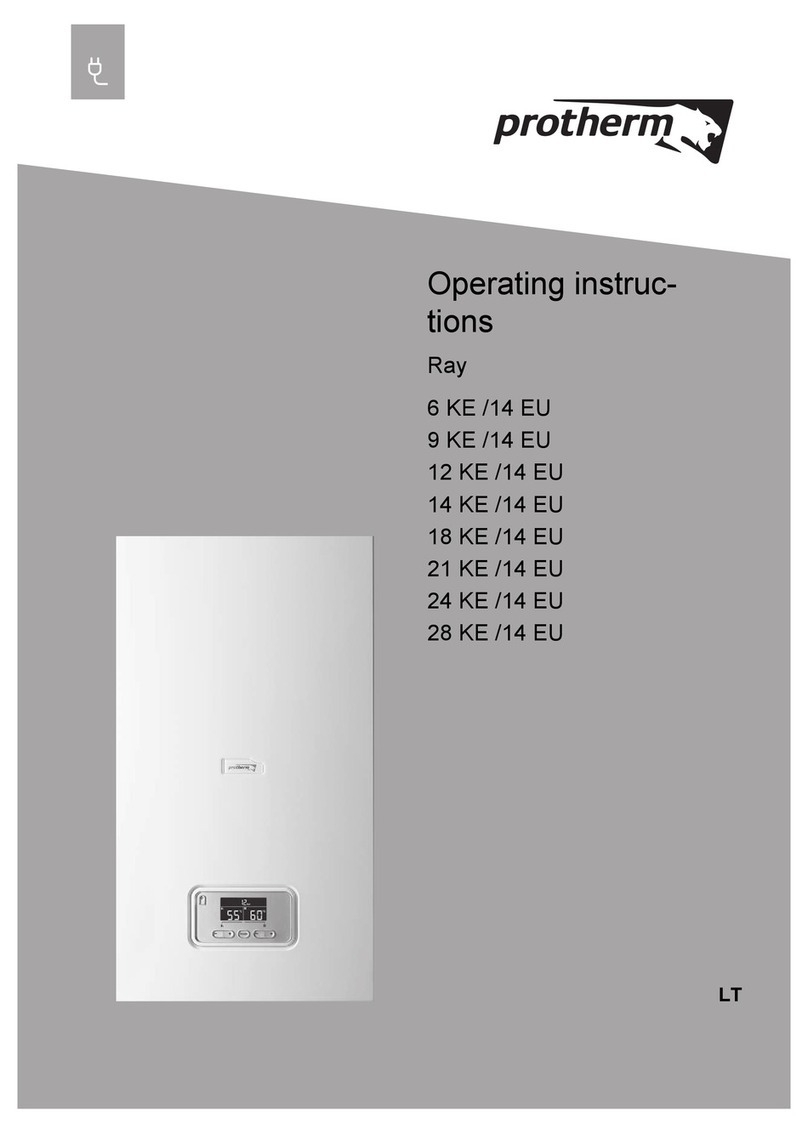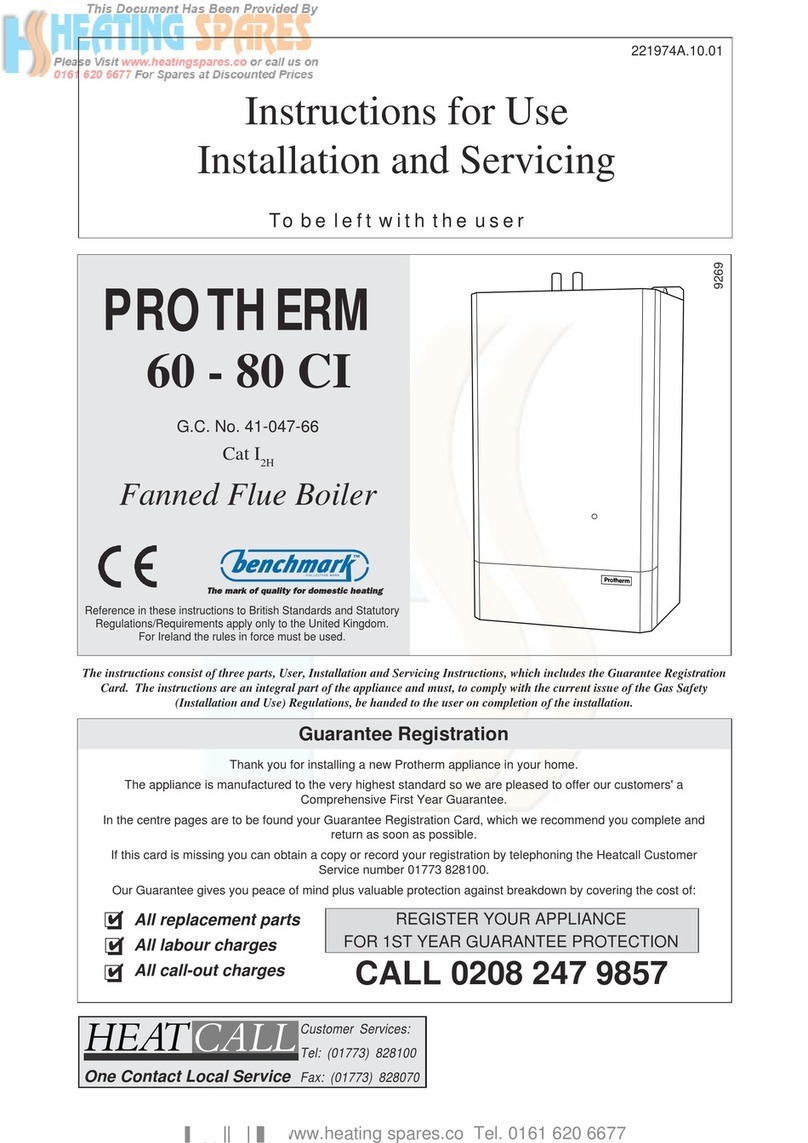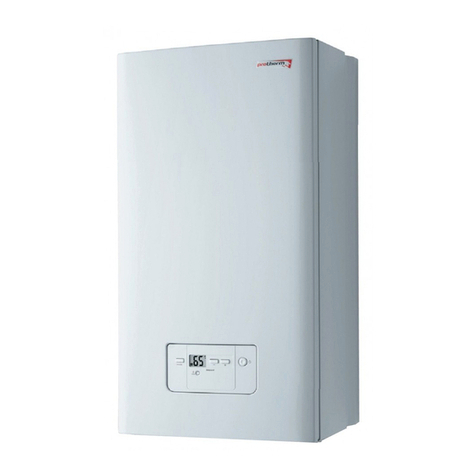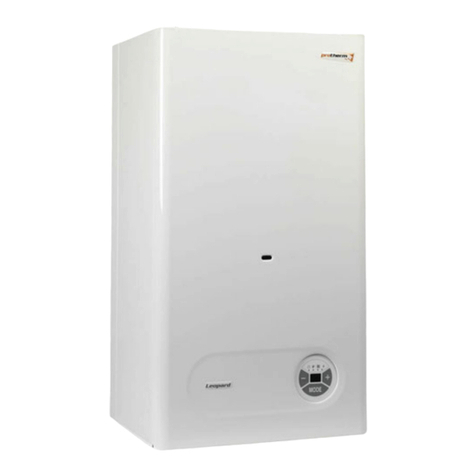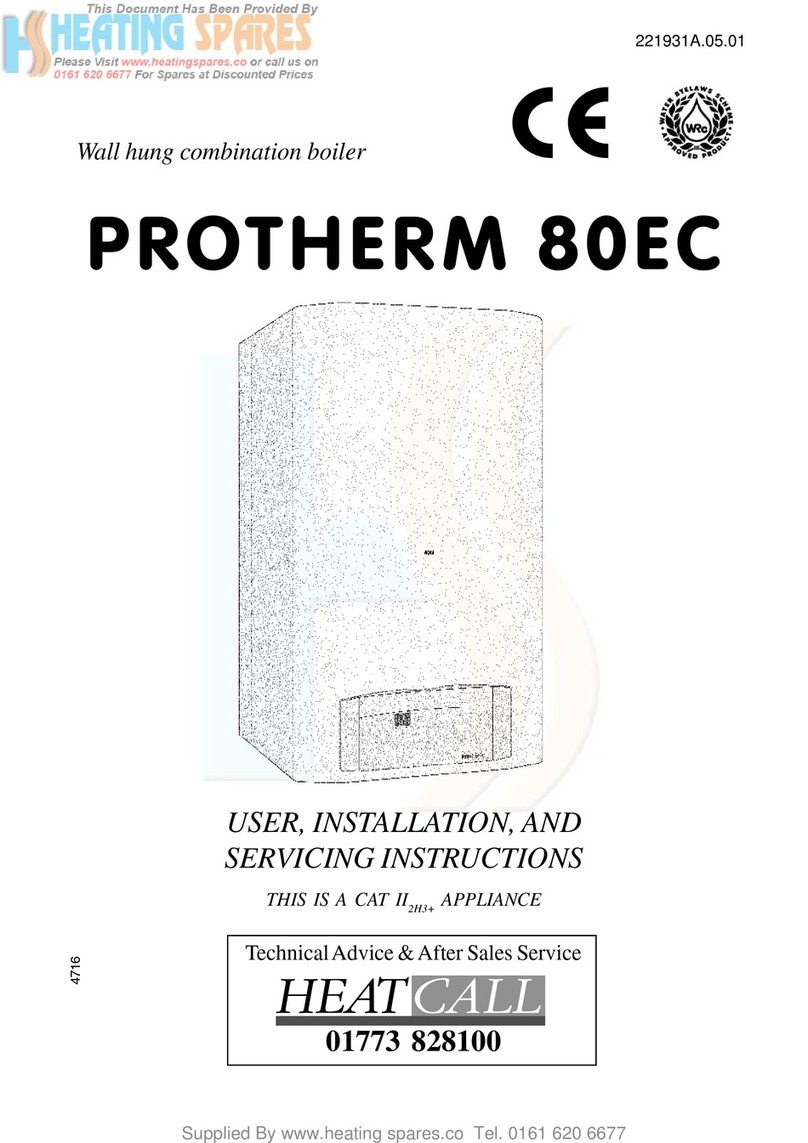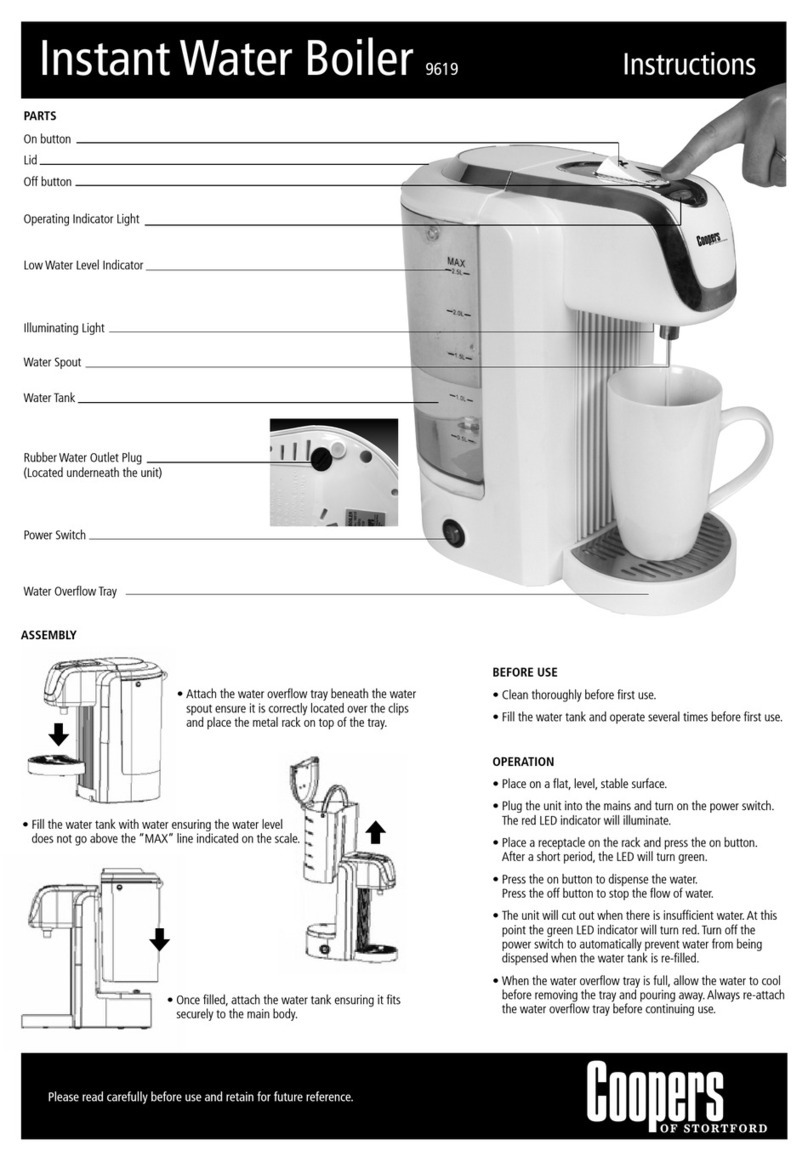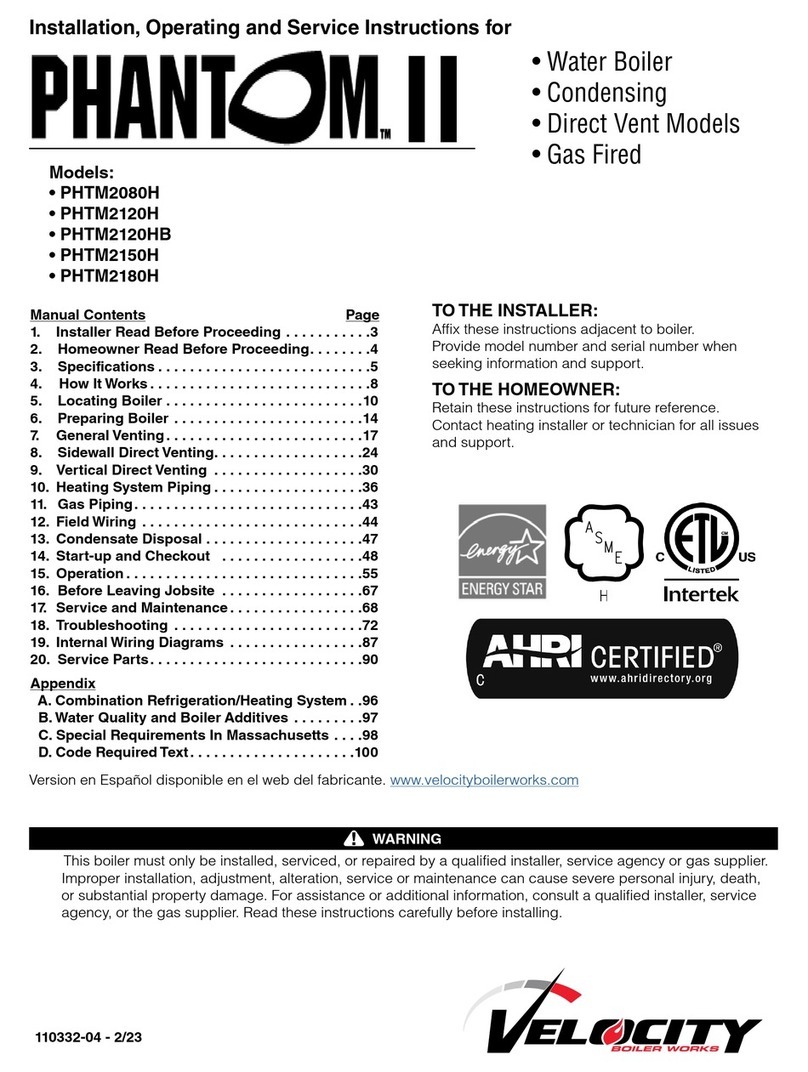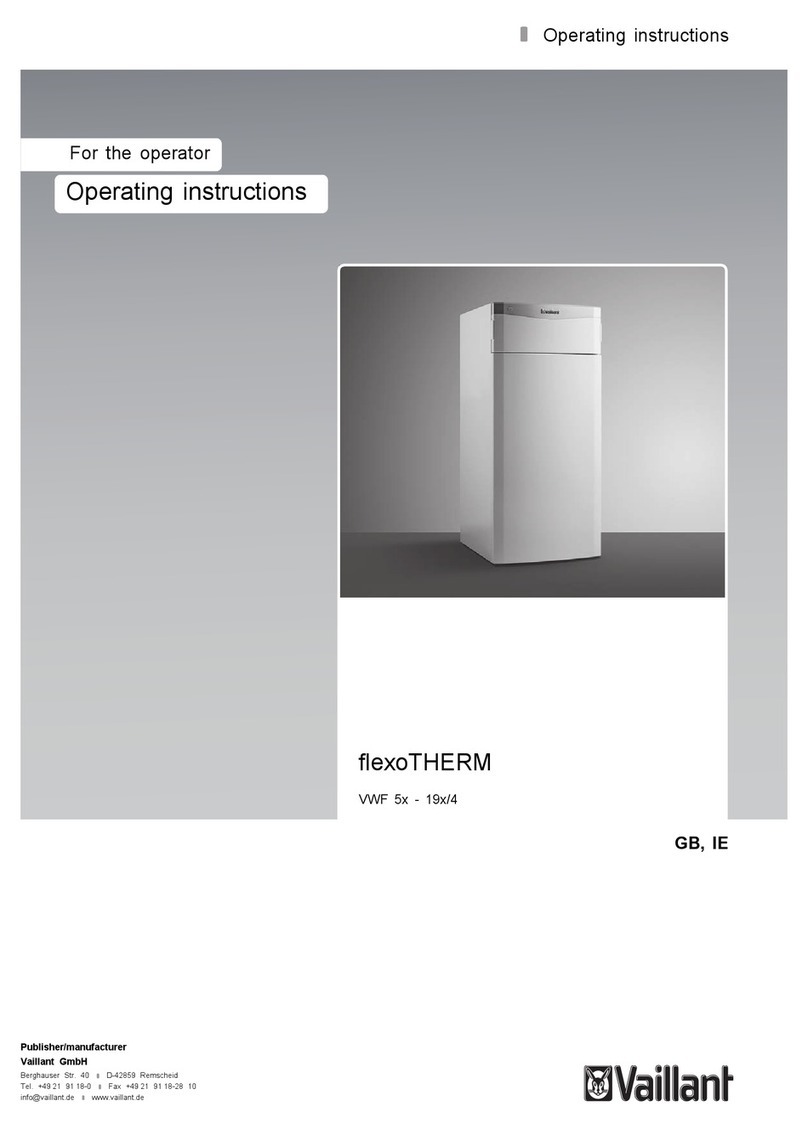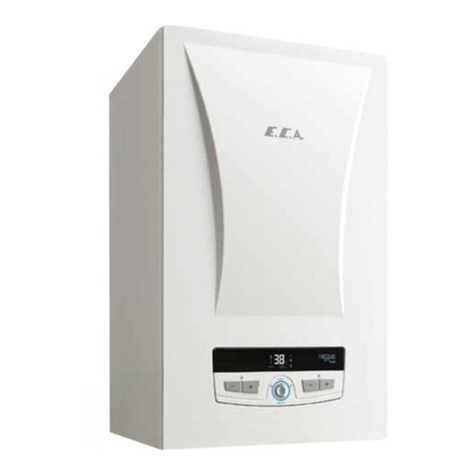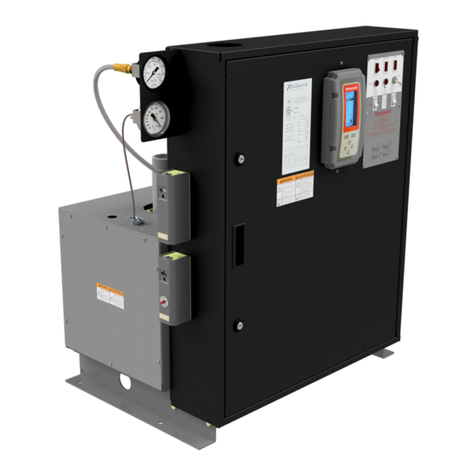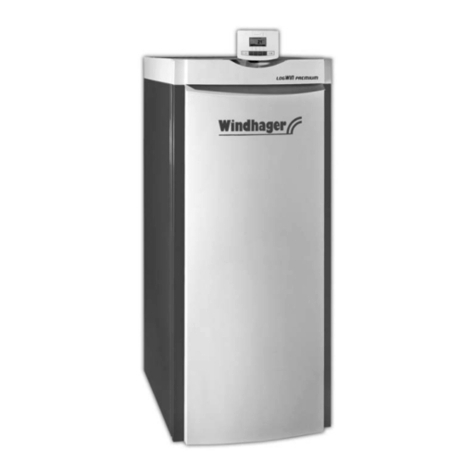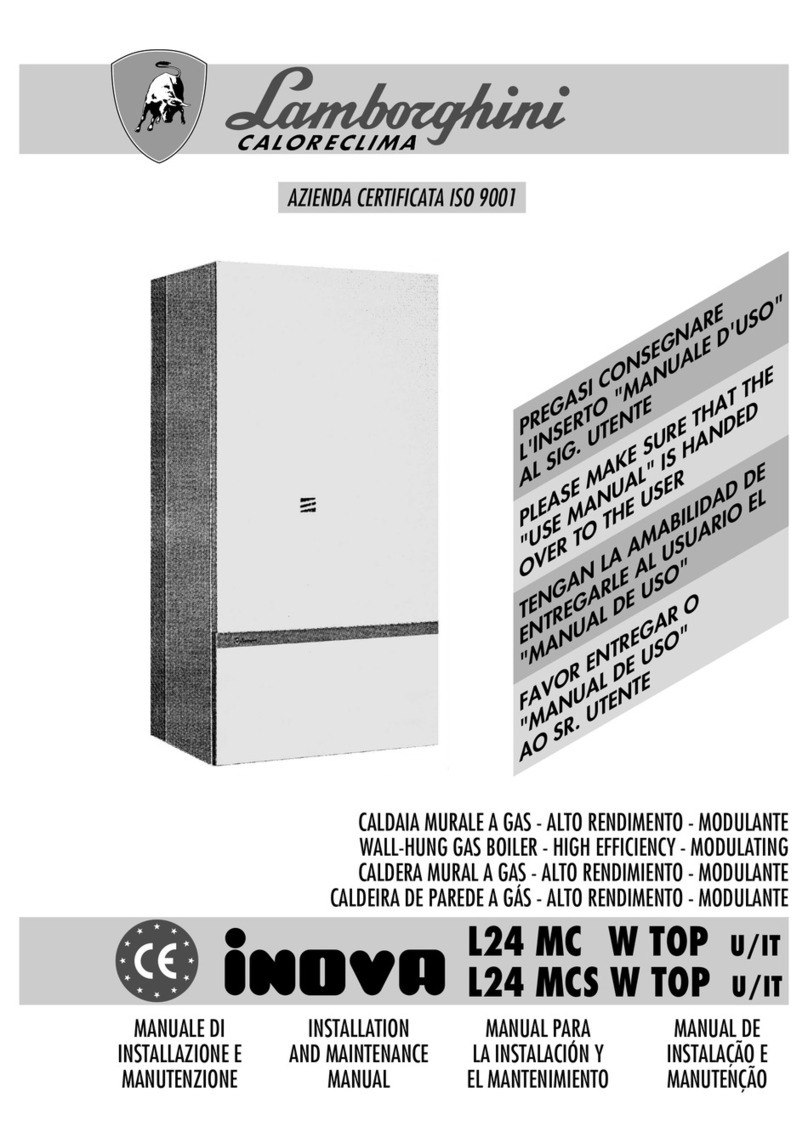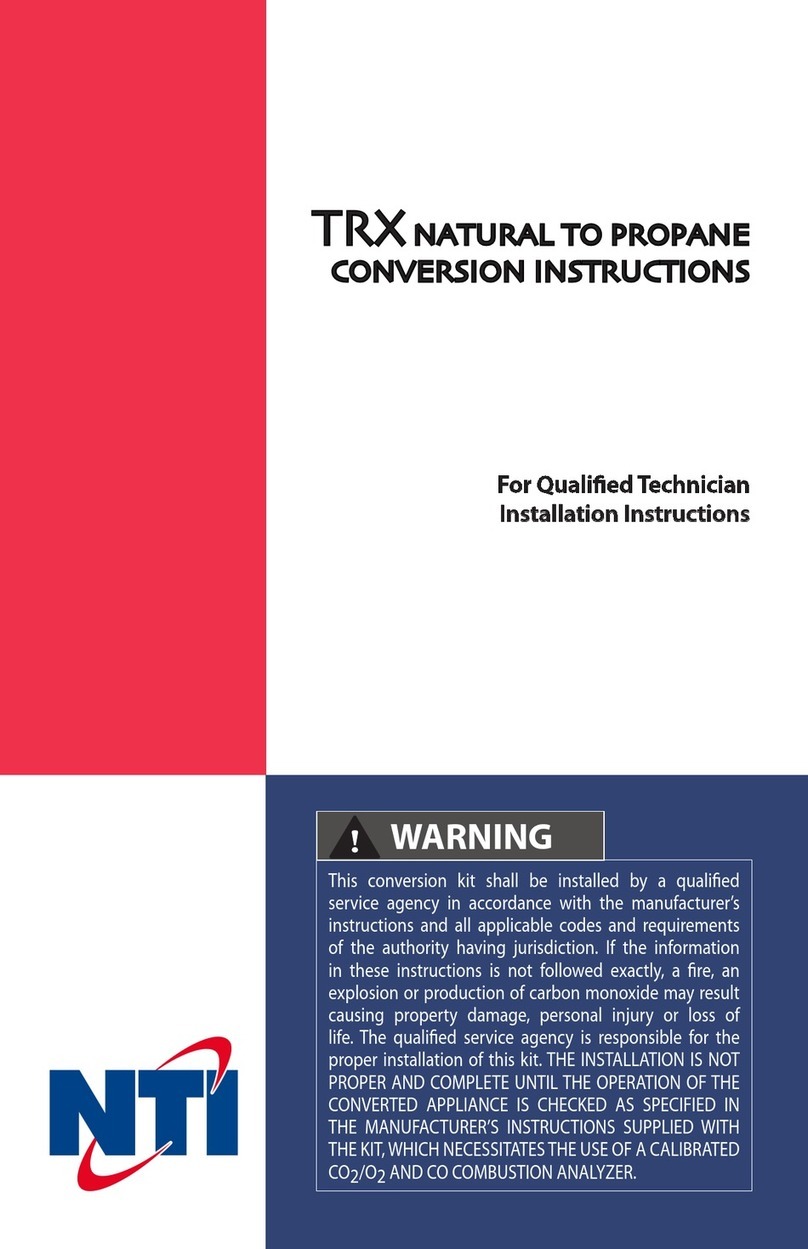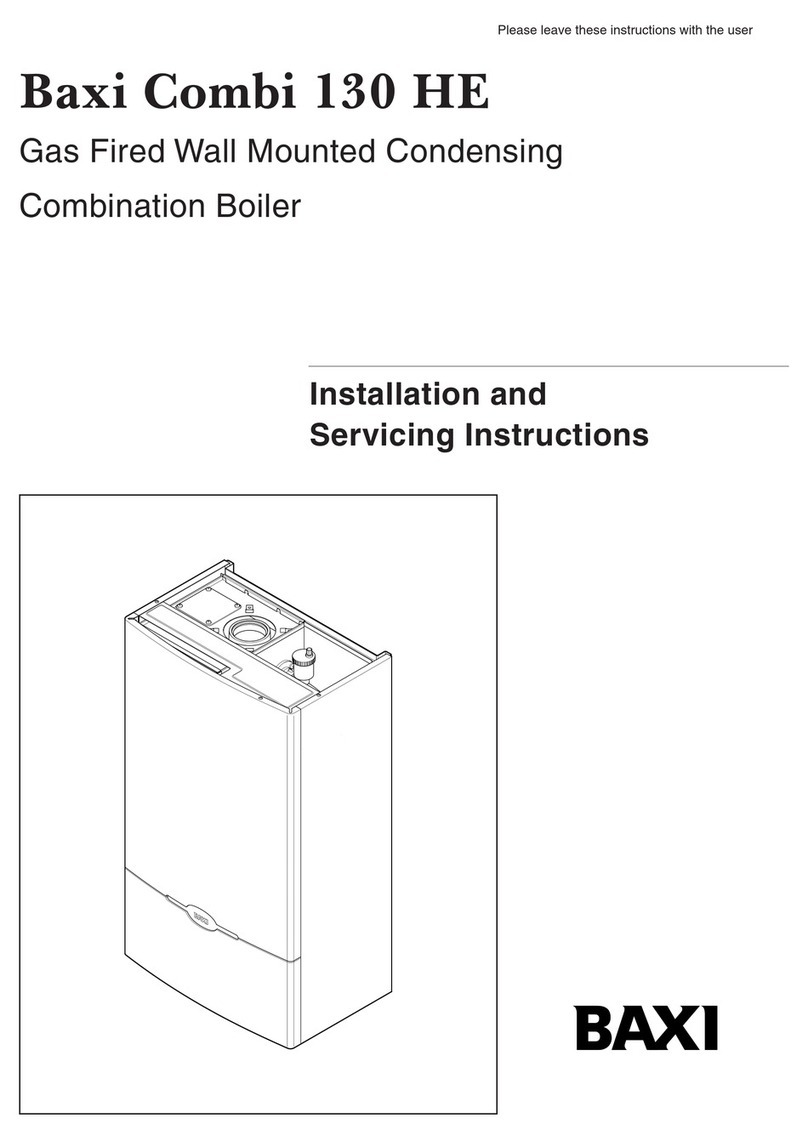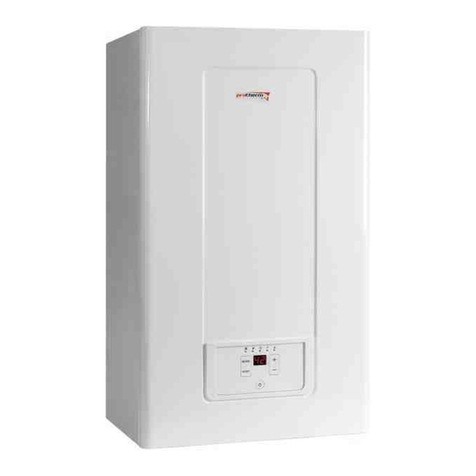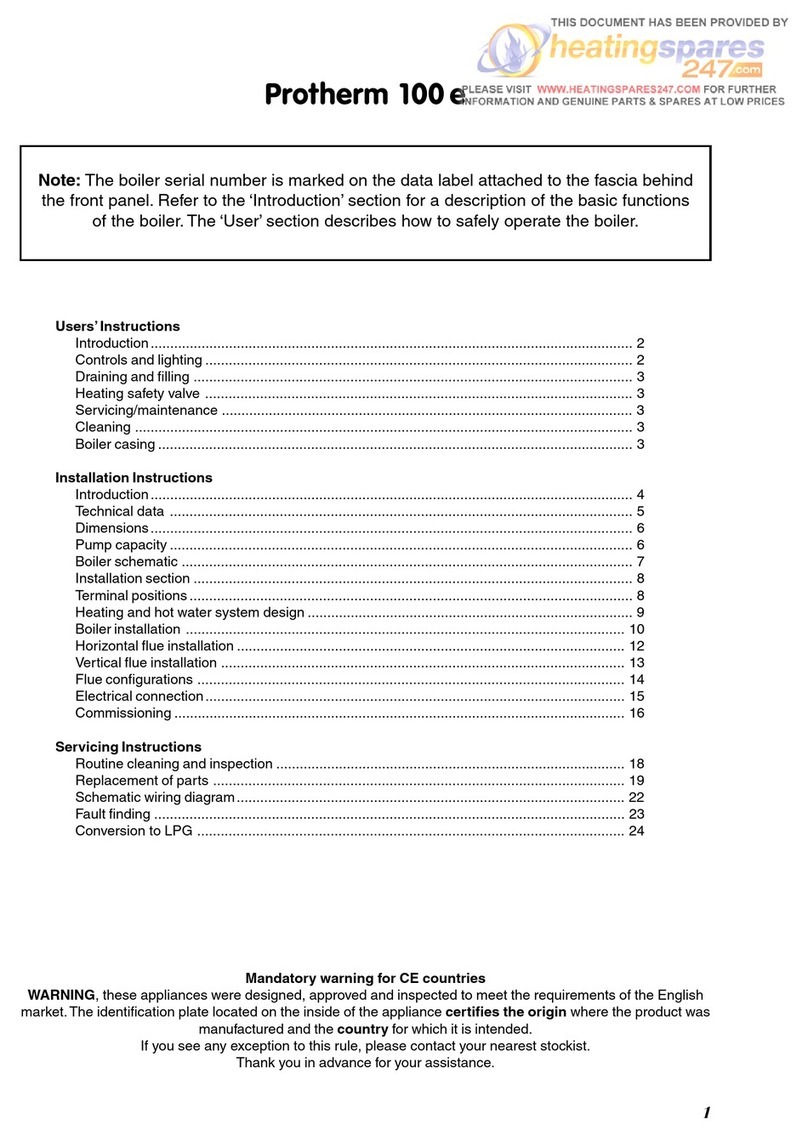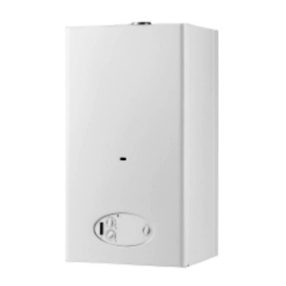9221973A
Diagram 3.1
3Water Systems
Theinstallationoftheboilermustcomplywiththerequirements
of the current issue of BS6798.
3.1 Frost Protection
If the position of the boiler is such that it may be vulnerable to
freezing it should be protected as specified in the current issue
ofBS5422.Itisrecommendedthatafrostprotectionthermostat
be fitted.
3.2 Pump
The pump, with integral valves, should be fitted in the heating
flow pipework from the boiler, it should be set to produce a
temperature difference of 11oC (20oF) between the flow and
return, with the boiler thermostat set at “MAX”, which is about
82oC (180oF).
The pressure loss of the boiler can be found from diagram 3.1.
High resistance microbore systems may require a higher duty
pump.
3.3 Bypass - Fully Pumped and Sealed Water
System
A bypass is usually unnecessary on systems using a 3 port
diverter valve since one port will remain in the open position at
all times. This allows satisfactory operation of the pump
overrun.
Howeverifthermostaticradiatorvalvesarefittedtoallradiators
or two port valves are used a bypass is required.
Thebypassconnectionmustbeatleast2metresawayfromthe
boiler.
Theflow through theboilermust not beallowedto fall suchthat
thereisatemperaturedifferencegreaterthan20oCbetweenthe
flow and return.
3.4 Water System
Foran openvented systemthe boilermustbesuppliedfrom an
unrestricted water supply taken from a feed and expansion
cisternfittedatamaximumheightof27metresabovetheboiler.
The cold feed must be 15mm minimum size.
It is important that the relative positions of the pump, cold feed
and open vent are as shown in diagram 3.2.
Theunrestrictedopenventfromtheboilermustrisecontinuously
to discharge over the feed and expansion cistern.
3.5 Domestic Hot Water System
General. Thedomestichotwaterservicemustbeinaccordance
withthecurrent issue of BS5546,referalsoto the current issue
of BS6700.
3.6 Cylinder
Forallsystems supplying domestic hot water the cylinder must
be indirect. It is recommended that the cylinder be fitted with
some form of temperature control.
3.7 Gravity Domestic Hot Water with Pumped
Heating
Important: If domestic hot water is to be provided by a gravity
circulation to the cylinder the blanked off connections must be
opened and used, using 22x28mm connections , see diagram
3.3.
3.8 Fully Pumped Heating and Domestic Hot
Water
The connection for this type of system MUST be as shown in
diagram 3.2 and 3.4.
3.9 Inhibitor
Attention is drawn to the current issue of BS5449 and BS7593
on the use of inhibitors in central heating systems.
Ifaninhibitoristobeused,contactamanufacturerorHepworth
Heating Ltd., for their recommendations as to the best product
to use.
When installing in an existing system take special care to drain
theentiresystem,includingradiators,thenthoroughlycleaning
outbeforeinstallingtheboilerwhetherornotaddinganinhibitor.
3.10 Sealed Water Systems
Theinstallationshouldcomplywiththeappropriaterequirements
ofthecurrent issue of BS4841, BS5449, BS6759,BS6798and
BS7074 Part 1 and 2, see diagram 3.5 for suggested layout.
3.11 Safety Valve
A safety valve must be fitted to a sealed water system.
It shall be preset, nonadjustable with a lift pressure of 3bar,
incorporating seating of a resilient material, a test device and a
connection for drain.
The drain from the safety valve must be routed clear of any
electrical fittings and positioned so that any discharge can be
seen.
3.12 Expansion Vessel
A diaphragm type expansion vessel, conforming to the current
issue of BS4814 (see also BS7404 Part 1 and 2) must be
connected at a point close to the inlet side of the circulating
pump, see diagram 3.5 unless laid down differently by the
manufacturer.
The expansion vessel volume depends upon the total water
systemvolume andtheinitial systemdesign pressure. For any
systeman accuratecalculation ofthe vesselsizeisgivenin the
current issue of BS7074 Part 1.
Example. For an initial system design pressure of 0.7bar the
minimum total vessel volume required is 0.063xTotal System
volume.
Note. A higher initial design pressure requires a larger volume
expansion vessel.
Guidance on vessel sizing is also given in the current issue of
BS5449 and BS7074 Part 1.
Thechargepressuremustnotbelessthanthestaticheadofthe
system, that is, the height of the highest point of the system
above the expansion vessel.
The water content of the boiler is given in Data Table 1.
1000
750
500
250 19.1
0051015 20 25 30
Flow rate (litres/minute)
Water pressure loss
(mm head of water)
0088
The insertion point indicates the flow rate required to achieve
11°C temperature difference




















